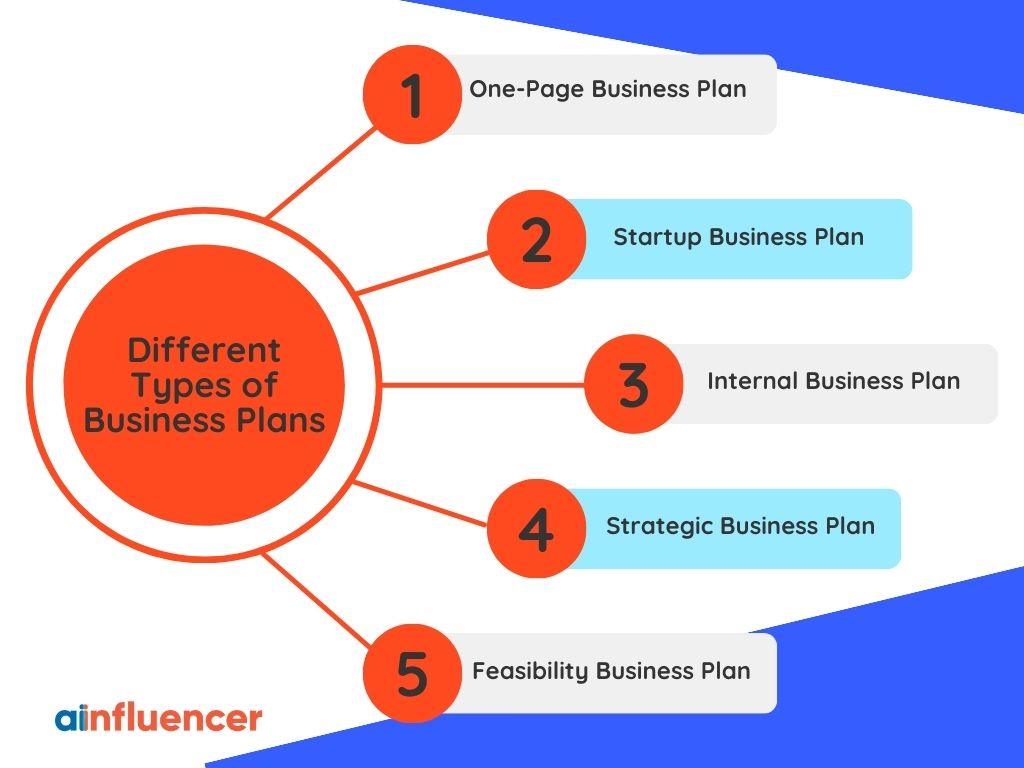If you want to start a new business, writing a good business plan will build a strong foundation to succeed. Good business plan examples are like a guide that helps you start and run your business smoothly. It’s like a roadmap that shows you how to set up, run, and grow your new business.
But how to write your own business plan? Well, before writing a sample business plan, it’s helpful to read business plan examples from other successful companies to learn how to start. In this article, we will look at real and startup business plan examples from an eCommerce marketing business to teach you how to write your own plan.
Let’s get started!
What Is a Business Plan?
A business plan is like a roadmap for a business that helps it to increase brand engagement among the audience and succeed. It has information about how the business will work and make money. People use it to show investors or banks when they need investors.
What Are Different Types of Business Plans?
By now, we’ve covered the definition of business plans. Let’s explore various types for different purposes:

1. One-Page Business Plan
A one-page business plan is a quick and easy summary of your business. It covers important facts such as what you do, who your customers are, and how you plan to make money.
2. Startup Business Plan
Business plan examples for startups mostly seek funding. It talks about what your business does, who your competitors are, and how you’ll reach customers. It also looks closely at the money side of things. You also see this type in small business marketing plan examples.
3. Internal Business Plan
An internal business plan is designed for your team. It helps everyone understand the business goals and how to achieve them. This sample business plan covers details like what your eCommerce brand does, who your customers are, and how you’ll market your products.
4. Strategic Business Plan
A strategic business plan looks at the big picture and long-term goals. It goes beyond the basics and forecasts growth and revenue. This plan includes everything from what your business does to how you’ll handle finances and operations.
5. Feasibility Business Plan
This is like a test for your business idea. It checks if your idea is worth turning into a full business plan. The feasibility plan focuses on researching your market, products, and operations.
Read Also: How to Grow Your Business Through Online Marketing
Now, it’s time to explore different business plan template examples (Section by Section):
Business Plan Format
When making your business plan, you don’t have to follow the exact plan structure. Just pick the parts that fit your business and what you want. Regular business plan examples usually have these eight sections, but you can mix them up as you need.
#1 Executive Summary
The executive summary is the main section of a business plan. In this section, you should tell people about your business. What components should be included? Well, it includes things like the mission, company history, competitive advantage overview, Financial projections, and company goals.
The summary is a vital part of any business plan because it gives a quick idea of what’s in the whole business plan, which can be really long. Remember to keep it short and focus on the most important things, as you’ll discuss the details later in the plan.
Business Plan Examples for Executive Summary Section
This is one of the examples of a business plan for a women’s shoe store.
Emma Jackson opened her first store, ‘ Shoe Fly’ in Eugene in 1981. Now, ‘Shoe Fly’ also has an online women-only shoe store. Her mission is to fill the need for a high-quality women’s shoe store in the area. The goal is to offer designs and styles that bring energy to outdoor activities. The ‘Shoe Fly’ store lets customers order 2 different sizes, which will be sent to them within two days. Moreover, there’s an option for rush overnight shipping. That’s why it stands out from the competitors!
Shoe Fly aims to become profitable by the tenth month, and they project $284,000 in sales by the third year.
#2 Company Description
You can use the info about your company in different places, like on your About page, your brand advertising on social media, or anywhere that needs a simple description of your small business. Be clear about who your business helps, like individuals or other companies.
Tell about the things that make your business stand out. Do you have experts on your team? Did you find a great spot for your store? Your business description is where you can talk proudly about what makes your company strong.
Business Plan Examples for Company Description Section
It might be easier to write a business plan if you know what to expect. Here is a sample business plan you can use as a template.
Shoe Fly’s expert team aims to design great, high-quality women’s shoes. Its owner, Emma Jackson, is making things super cost-effective. How? Shoe Fly eliminates the cost of inventory and intermediary costs. So, It will make and ship them directly to customers. All the customers need to do is just order and pay online, and it takes care of the rest. If you need a different size, no problem – we can get it to you in two days. Our main thing is designing clothes and getting them out there for you to enjoy.
#3 Market Analysis
Market analysis means studying what people want to buy, who might buy it, and what other businesses are doing. It’s like figuring out the best way to sell your products by looking at what’s popular and what your competition is up to. You can also check your strengths and weaknesses to plan things better for your business.
Business Plan Examples for Market Analysis Section
Here’s an example of a business plan for a store market analysis:
Shoe Fly is a shoe store for stylish women in Eugene, OR, focusing on two main groups: professionals who need fashionable work shoes and housewives looking for trendy yet casual footwear.
Market Segmentation:
- Professionals: Full-time working women earning over $45,000, seeking both work and leisure shoes.
- Housewives: Women with incomes ranging from $60,000 to $120,000 prefer fashionable and casual shoes.
Strengths:
- The store is committed to providing excellent customer service.
- The main goal is to attract and keep customers satisfied.
- It omitted the Intermediary’s fee.
- Customers can order different sizes.
#4 Products & Services
In this section, You should write about what you’re selling or the service you’re offering. Share how it helps your customers and talk about your product’s journey from start to finish.
Let us know if you’re protecting your ideas with things like copyrights or patents. If you’re working on making your product or service better, tell all about your research and development.
Business Plan Examples for Products and Services Section
Here’s what Shoe Fly wrote for this business plan section:
Shoe Fly offers high-quality women’s shoes, including sandals, chic work shoes, loafers, dress shoes, and stylish canvas athletic shoes.
#5 Marketing Plan
Before starting your business, plan how to tell people about it. This plan is called a marketing strategy and is super important for your overall business plan. In the marketing plan, figure out how to reach customers through social media, such as influencer marketing strategy, email marketing, content marketing, business advertising, etc.
Set clear goals for your business, like creating a website or getting a certain amount of visitors each month. Also, look at what other successful businesses are doing in your area and think about how you want to connect with your customers.
Business Plan Examples for Marketing Plan Section
Sales Channels:
- The website where you can buy things online.
- Social media like Instagram and Facebook.
- Online marketplaces such as eBay
Marketing Activities:
- Using social media to promote and advertise.
- Partnering with influencers to help spread the word.
- Making sure the website shows up in online searches and creating interesting content.
- Sending out emails to let people know about our products and promotions.
#6 Logistics And Operations Plan
Logistics is the process of moving finished goods from their origin point to consumption. Operation planning is how a company plans everything, from managing employees to getting the product to customers. So, this part of your business plan tells about suppliers, equipment, shipping, and more.
Shoe Fly’s business plan example:
- Equipment and supplies: $98,000
- The Shoe Fly Transportation process involves product development, e-commerce sales, logistics communication, packaging, and transportation. No inventory and storage.
#7 Financial Plan
What do investors want to see in this section? The financial plan, also known as the financial statement, details your sales, revenue, expenses, profit, and other money measures. Make sure to add all the numbers and real facts to show how your money is now and how it might be in the future.
Business Plan Examples for Financial Plan
Here’s the financial plan for the online store Shoe Fly. It has information that predicts how much money they’ll make, spend, and have left over.
For example, $13,000 monthly revenue is needed to break even.
Next, it looks more closely at the financial data, talking about:
- How much money is needed?
- A statement showing the money coming in and going out for the project.
- A statement showing the project’s profits and losses.
- A prediction of what the project’s financial situation will be like in the future.
#8 Appendix
What kind of documents should you use? Include extra papers or things the person asked for in your appendix. This could be data like credit history, resumes, pictures of products, reference letters, licenses, permits, patents, legal papers, and other agreements.
Note: As we mentioned before, when you pick a marketing plan to promote your products, there are different options. One choice is using social media marketing. To do it easily, we suggest using an influencer marketing platform. It makes the whole thing safe, quick, and simple.
Ainfluencer: The Best Influencer Marketing Platform
Ainfluencer is a totally free platform that makes influencer marketing easy for both brands and influencers. No matter your brand’s size or location, you can use Ainfluencer and its features for free forever.
You can create campaigns in a few steps and invite as many influencers as you want for free. Ainfluencer’s Escrow system ensures safe payments for influencers. It’s a great way to connect and collaborate without any limits.
Sign up now and keep close to succeeding in your marketing!
To Wrap Things Up
Writing a perfect business plan can be a daunting task. Without it, you won’t impress your audience when asking for actions. So, in this article, we’ve provided some samples from startups to nonprofit business plan examples. You can use these sections to write your plan easily.
FAQs
Concept: Explain the purpose of your business and give a summary of your goals.
Contents: Include details about your products/services, target market, and competition.
Cashflow: Describe expected cash inflows and outflows, such as investments, operating costs, and revenue projections.
To create a simple business plan, start with an executive summary of your business and plans. Then, include sections about your company, market, organization, product or service, marketing strategy, sales plan, and financial projections. Keep each section as short as possible and make them clear to showcase your strategies and goals.
The best format for a business plan is one that organizes your information clearly. This makes it easy for investors to understand your business goals. Therefore, you must always start with a summary and end with financial details or extra information in appendices.
Executive Summary: Summarize your company’s mission, goals, target audience, and financial objectives.
Company Description: Describe your business’s purpose, operations, products or services, target markets, and competition.
Market Analysis: Analyze the industry, market trends, potential customers, and competitors.
Financial Plan: Provide detailed information about your company’s financial forecasts and strategies.
![You are currently viewing 8 Business Plan Examples: [Roadmap to Succeed in 2024]](https://blog.ainfluencer.com/wp-content/uploads/2023/12/Business-plan-examples-featured-1.jpg)
![Read more about the article What Is Ghost Commerce? [A Comprehensive Review in 2024]](https://blog.ainfluencer.com/wp-content/uploads/2024/03/ghost-commerce-featured-300x182.jpg)
![Read more about the article The Growth of Affiliate Marketing [2024 Update]](https://blog.ainfluencer.com/wp-content/uploads/2024/05/The-Growth-of-Affiliate-Marketing-2024-Update-300x182.jpg)






![Read more about the article Marketing to Gen Z: [Proven Strategies & Practices in 2024]](https://blog.ainfluencer.com/wp-content/uploads/2024/04/jpeg-optimizer_facebook-1-300x182.jpg)